Helen Hiebert
From Discourse 13
My fascination with kites stems from the way they capture light as they move in the wind. My own work has developed primarily in handmade pa- per, and I have yet to design my own kite, but I recently found a book on my shelf that I’d had since childhood called “Drachen Basteln” (Craft Kites) which I must have purchased or been gift- ed when my family lived in Germany for a year when I was sixteen.
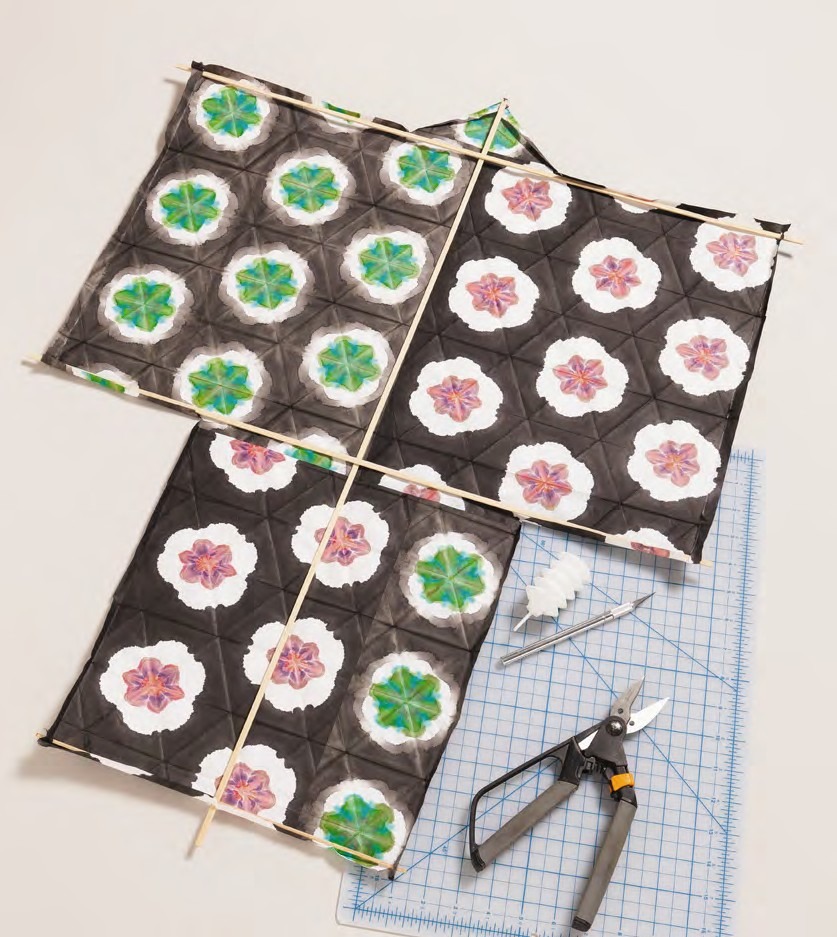
Helen Hiebert Studio. Helen’s version of Scott Skinner’s Sode kite, in the air and in the studio.
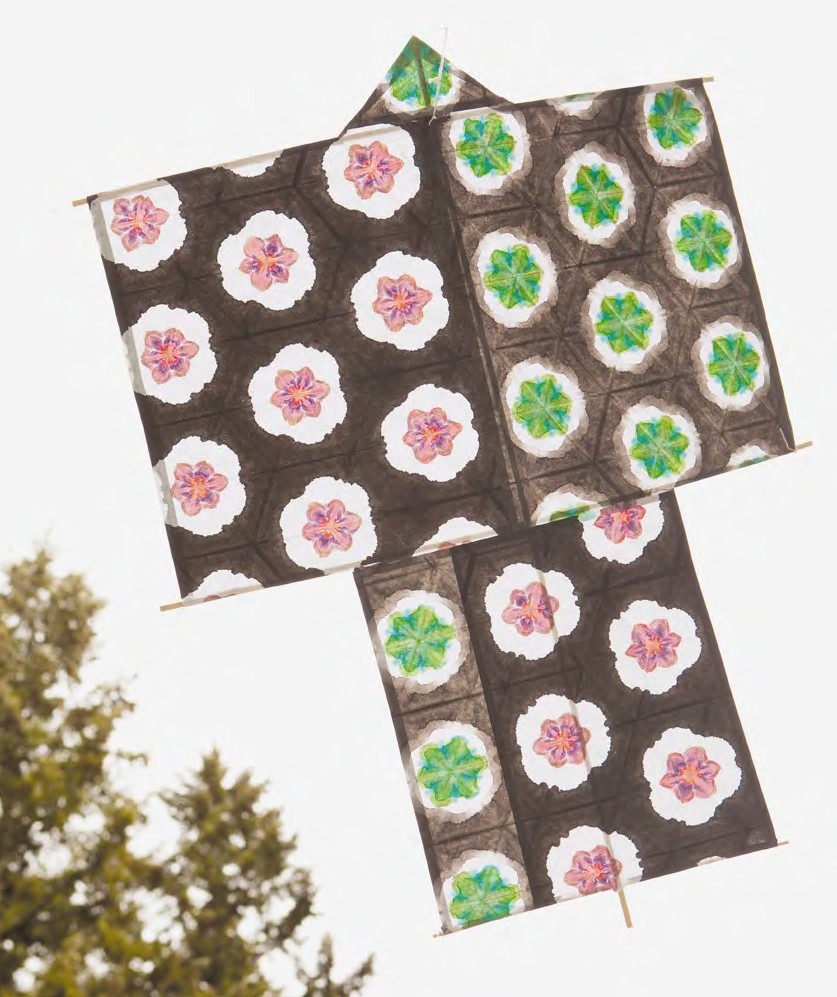
Helen Hiebert Studio. Helen’s version of Scott Skinner’s Sode kite, in the air and in the studio.
Fast forward fifteen years or so, and I had the pleasure of meeting Ali Fujino, director of the Drachen Foundation, on an airport shuttle bus in Chillicothe, Ohio, where we both attended the annual meeting of The Friends of Dard Hunter, a national papermaking organization. At that meet- ing I also had the good fortune of attending a kitemaking workshop with Scott Skinner, another Drachen Foundation luminary, and what sticks in my mind is this thought: “If I’d met this guy 15-20 years earlier, I’d have become a kitemaker.” The way he conducted the workshop was so similar to my own style of teaching, and I could feel his cognitive gears churning as mine would.
A year or so after meeting the “kite people,” I read Brian Queen’s article in Hand Papermaking magazine about how to make hot air balloons. I’ve known Brian for many years, and we share an interest in illuminating paper. I was on my way to teach a 2-1/2 week workshop at the Penland School of Crafts in North Carolina and decided to subject my students to making an eight foot tall hot air balloon using tissue paper, following Queen’s instructions. We spent several evenings assembling the gores (panels), connecting them and finally patching a few holes and flying the balloon.
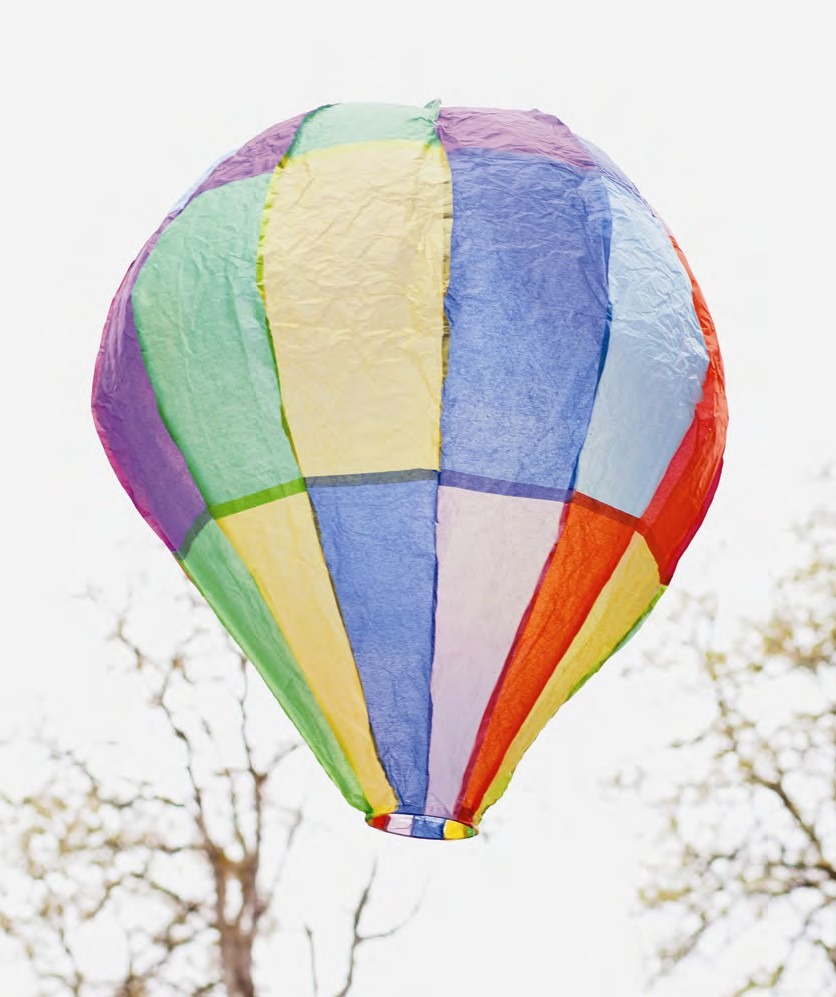
Helen Hiebert Studio. A paper hot-air balloon.
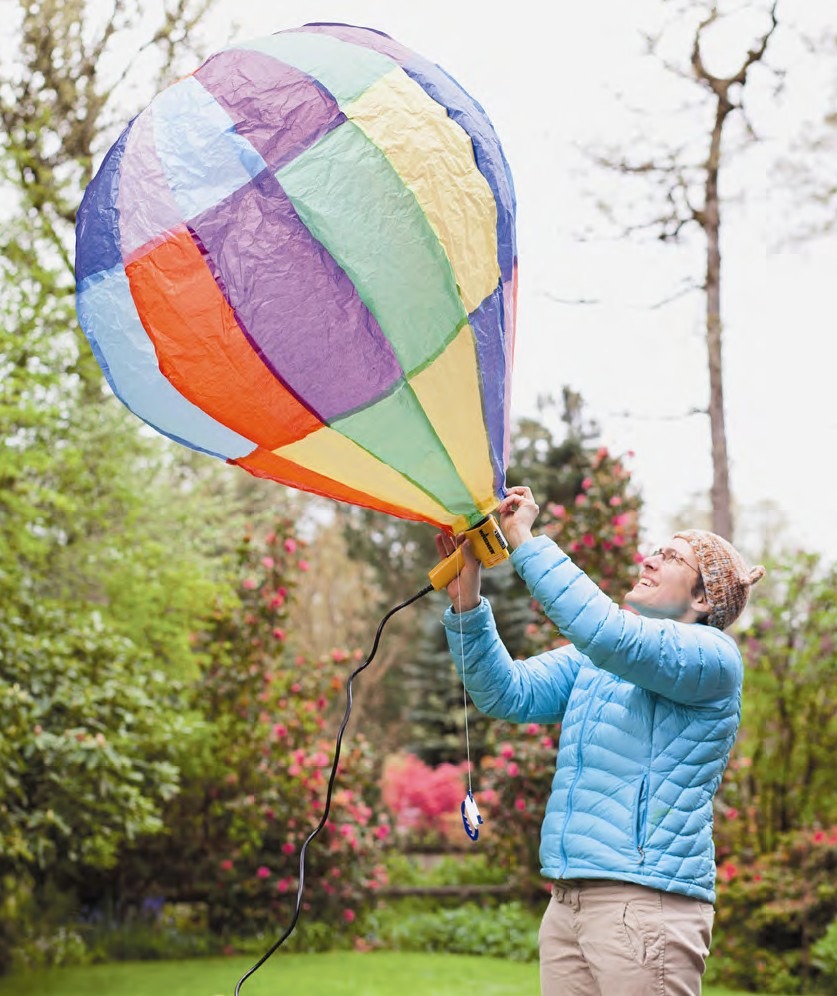
Helen Hiebert Studio. A paper hot-air balloon.
Flying it wasn’t as easy as you might think. Our first attempt was in the morning on a hill in front of the dining hall at Penland, where we hoped our balloon would be a spectacle. We heated the balloon with a camping stove and the vibrant colors looked stunning as it inflated. But alas, it didn’t take off because there wasn’t a big enough difference in air temperature between the inside and outside of the balloon. A few of us did make another attempt a few mornings later, getting up earlier when the air was still cool. This time we used a couple of blow dryers to inflate the balloon, and lo and behold, it lifted and flew up over the papermaking studio and into the trees behind it. We immediately turned into a bunch of children, squealing with excitement.
Now back to kites (and children). I ran an after-school Paper Club at my children’s school for a couple of years, and one of our 4-week sessions involved making things that fly. It was a delight to discover that the Drachen Foundation sells small kitemaking kits, so I ordered a batch and the kids and I enjoyed decorating, assembling and flying our kites on the playground at the school.
I taught at Penland again in the summer of 2011; this time I co-instructed a course with Alyssa Salomon who specializes in alternative photography. We began the class by making cyanotype prints on Japanese paper. The blue of the cyanotypes looked incredible as we flew our kites (again assembled using Drachen kits) near the same hill where the balloon launch had failed five years prior. It was a fun way to begin the class: practicing the photo technique, building the simple kite structures, and then illuminating our images against the sky.
Shortly after that workshop at Penland, I noticed a call for artists books. I submitted images and got to thinking, “What about a book called ‘1,000 Sheets of Paper’?” My primary interest in paper has always been how one sheet can be manipulated, through the simplicity of cuts and folds or the complexity of twists and pop-ups, to turn the flat and mundane into incredible sculptural forms. I contacted the editor, who happened to be someone I’d spoken to about another project a couple of years earlier, but my pitch wasn’t quite convincing enough (hopefully one day the idea will manifest itself) but the editor did have another book idea in mind.

Helen Hiebert Studio. Flying kites at Penland School of Crafts.
In December 2011, I secured a contract to write “Playing With Paper: Illuminating, Engineering, and Reimagining Paper Art” for Rockport Publishers. As with all of the books I’ve written (“Paper- making with Garden Plants & Common Weeds”, “The Papermaker’s Companion”, and “Paper Illuminated”, all published by Storey Books) I had quite a bit of content control. I never in my life dreamt I would write a book (much less four books) but I’ve really enjoyed every one of them. They allow me to be creative (I get to come up with project ideas and design them); they enable me to connect with experts in the field (whose work I get to curate and show off); and I get to collaborate with other artists, photographers and designers.
I immediately knew that I wanted to include a kite project (as well as a hot air balloon) in the book. I contacted Scott Skinner to see if he would be willing to contribute a project, and he agreed to make a Sode kite (traditional Japanese kite shaped like a kimono). I tried to incorporate a different paper for each project in the book in order to give the reader a glimpse into the world of fine paper. For Scott’s project, I suggested he use a hand dyed paper created by Susan Kristoferson. Scott created a sample kite, wrote instructions and sent them to me. I fabricated another kite following his instructions and using Kristoferson’s paper. Scott and I had a couple of phone conversations (one at the last minute from the photography studio) to make sure everything was accurate. The final stage was flying the kite for the photo shoot. Unfortunately, the day was not windy enough nor did my legs carry me fast enough to get a good action photo, but we did end getting a shot of the kite in the sky.
I remember the stimulating conversation Ali Fujino and I had in that airport shuttle, as I told her about my interest in watermarks and we dreamed about making kites with watermarked papers. Watermarking is a process done during the papermaking process, in which the watermarked areas in a sheet of paper are thinner, so they show up when illuminated. I would love to see a water- marked paper flying in the sky.
Helen’s book, “Playing With Paper”, ISBN #9781592538140, will be published by Quarry Press in January, 2013. To order an autographed copy, or to find out more about Helen’s work, visit www.helenhiebertstudio.com.
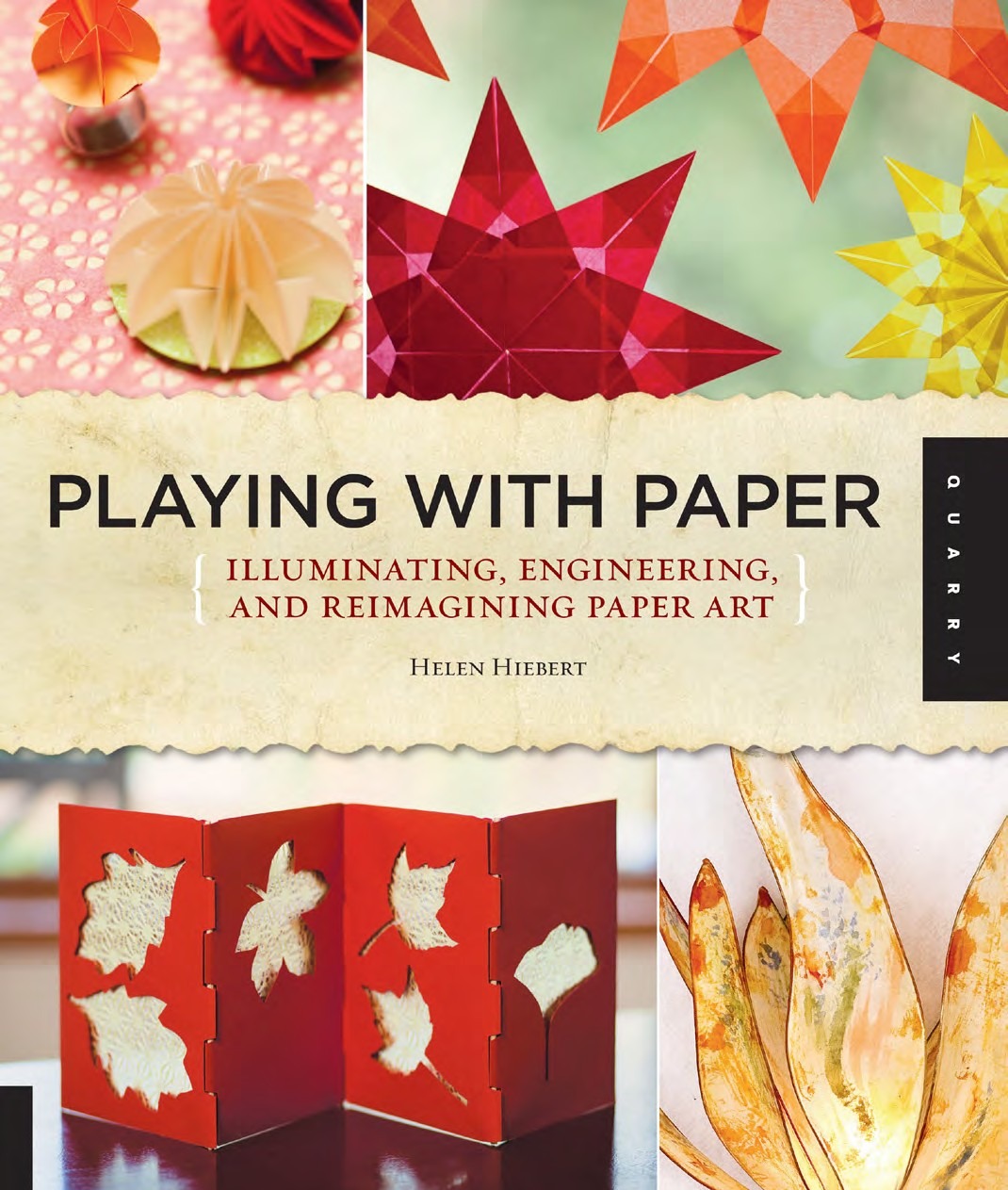
Helen Hiebert

